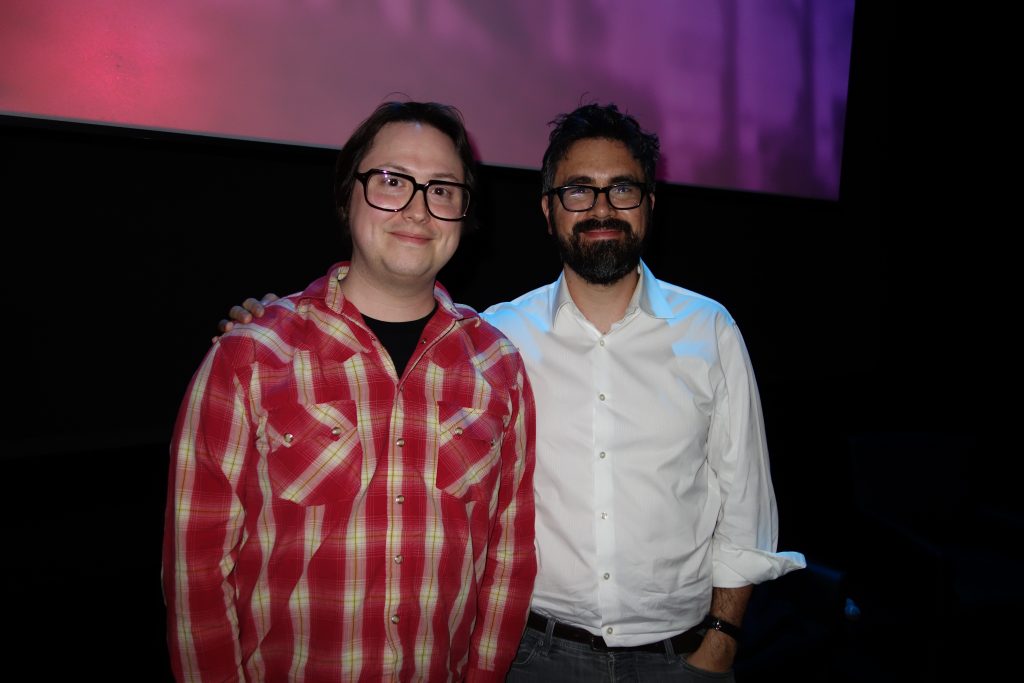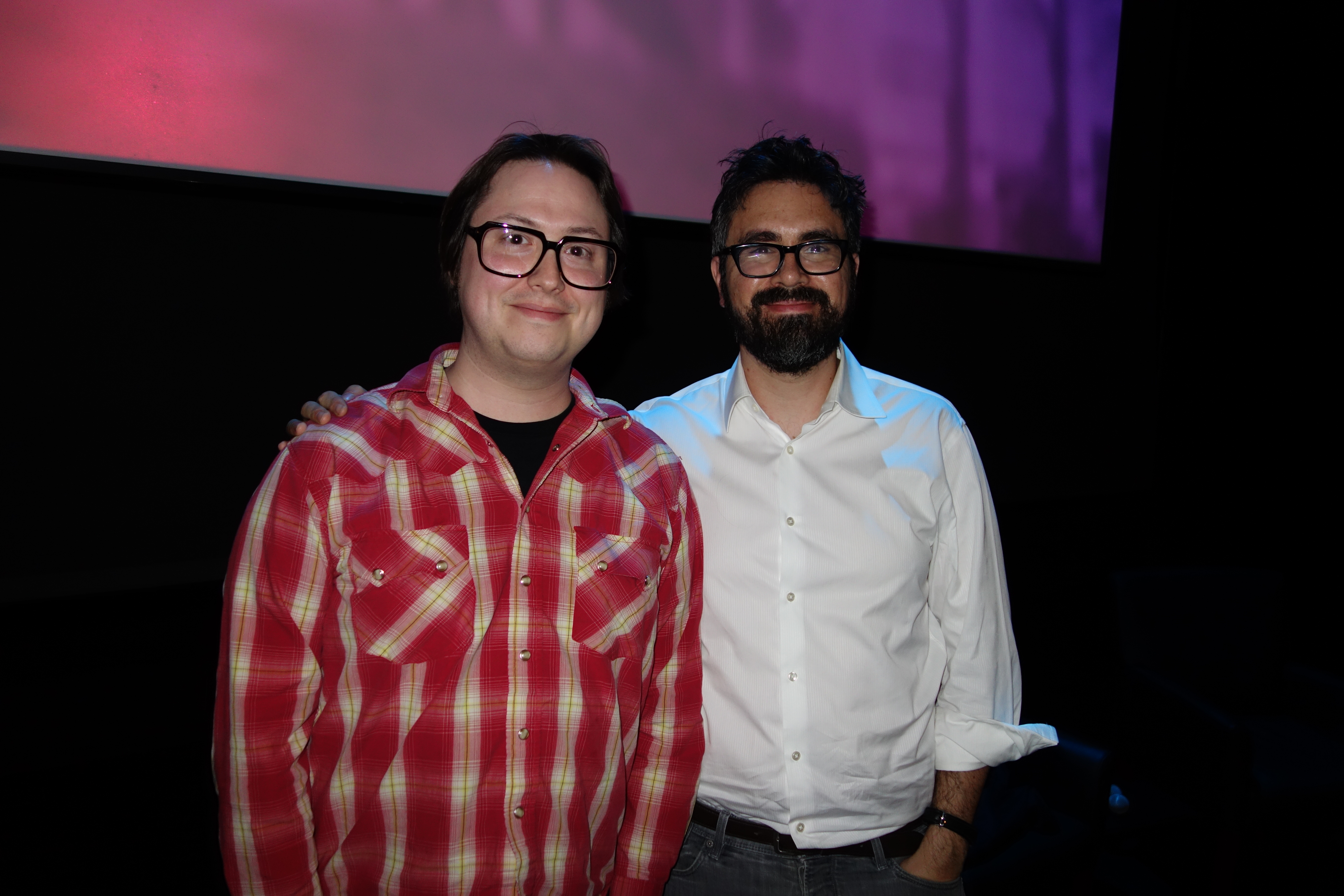
That is director Andrew Bujalski describing his own 2013 film Computer Chess, which was given a special screening at the Bullock Museum in Austin on March 8.
The film was shot using cameras that originated in the 1960s. Instead of the standard 24 frames per second, the old video format was 29.97 fps, and the frames are interlaced. This gives the movie “its very particular look, one that occupied a narrow niche in history. The contrarian part of me thought ‘you want video, I’ll give you video!’”
After being dared by a colleague to write a treatment, he did so in 8 pages, “and that became the movie. Everything was structured but there was no conventional script. I just cast really smart people, including a University of Chicago professor.”
One of these cast members, Wiley Wiggins, was also at the Bullock to talk about the film. On its overall appearance, Wiggins joked that “if you watched East German TV in the Cold War, it will be very nostalgic!”
Wiggins said that “every chess game in the film was an actual scripted chess game.” But a curious segment of film has, for some, upstaged the ostensible focus of film, which was following in a spoof-like fashion the ups and downs of a tournament where computers played chess against one another. It is set in the very early days of computer chess, circa 1980 (the computers in the film were loaned by the now-defunct Goodwill Computer Museum in Austin).
One late night the character played by Wiggins is confronted by a computer that asks him probing questions, an idea he told me was derived from a program called Eliza that assumed the role of a psychiatrist. It originated in the 1960s, and today you can (creepily) interact with Eliza at this site: http://www.manifestation.com/neurotoys/eliza.php3
Bujalski said the scene in Computer Chess “plays on the fear and anxiety that people had with computers, a paranoia that is still with us today. What happens when computers are smarter than us?”
The film is available on Netflix. It was screened at the Bullock Museum as part of their Texas Focus film series. Visit their website for details: www.thestoryoftexas.com
Photo with this article copyright by Dr. Cunningham
